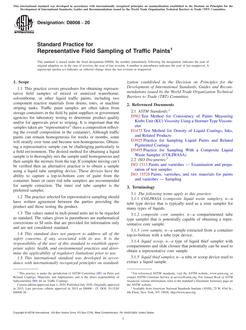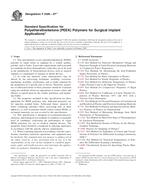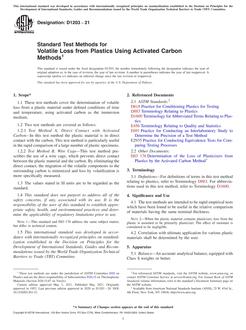1.1 This test method covers the simultaneous determination of 18 alloying and residual elements in carbon and low-alloy steels in the concentration ranges shown (Note 1).
Concentration Range, % Element Range Tested Applicable Range Aluminum 0.021 to 0.067 0.02 to 0.075 Arsenic 0.014 to 0.041 0.010 to 0.050 Boron 0.0006 to 0.0063 0.0006 to 0.007 Carbon 0.03 to 1.05 0.03 to 1.10 Chromium 0.09 to 2.13 0.03 to 2.25 Cobalt 0.0086 to 0.16 0.008 to 0.18 Copper 0.05 to 0.44 0.01 to 0.50 Manganese 0.32 to 1.89 0.25 to 2.00 Molybdenum 0.15 to 0.56 0.01 to 0.60 Nickel 0.060 to 4.80 0.03 to 5.00 Niobium 0.008 to 0.076 0.008 to 0.085 Phosphorus 0.012 to 0.078 0.005 to 0.085 Silicon 0.18 to 1.06 0.01 to 1.15 Sulfur 0.014 to 0.051 0.005 to 0.055 Tin 0.006 to 0.040 0.003 to 0.045 Titanium 0.002 to 0.190 0.002 to 0.20 Vanadium 0.003 to 0.28 0.002 to 0.30 Zirconium 0.003 to 0.044 0.003 to 0.050
1.2 This test method covers analysis of specimens having a diameter adequate to overlap the bore of the spark stand opening (to effect an argon seal). The specimen thickness should be between 10 and 38 mm.
1.3 This test method covers the routine control analysis of preliminary and ladle tests from either basic oxygen, open-hearth, or electric furnaces and analysis of processed material. It is designed for either chill-cast or rolled and forged specimens. The reference materials and specimens should be of similar metallurgical condition and composition.
1.4 This standard does not purport to address all of the safety concerns, if any, associated with its use. It is the responsibility of the user of this standard to establish appropriate safety and health practices and determine the applicability of regulatory limitations prior to use.
Product Details
- Published:
- 11/10/1999
- Number of Pages:
- 9
- File Size:
- 1 file , 88 KB


